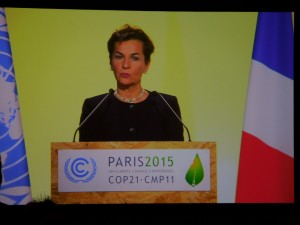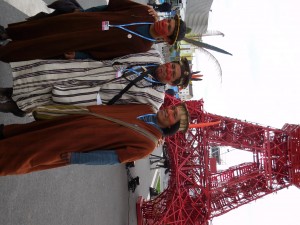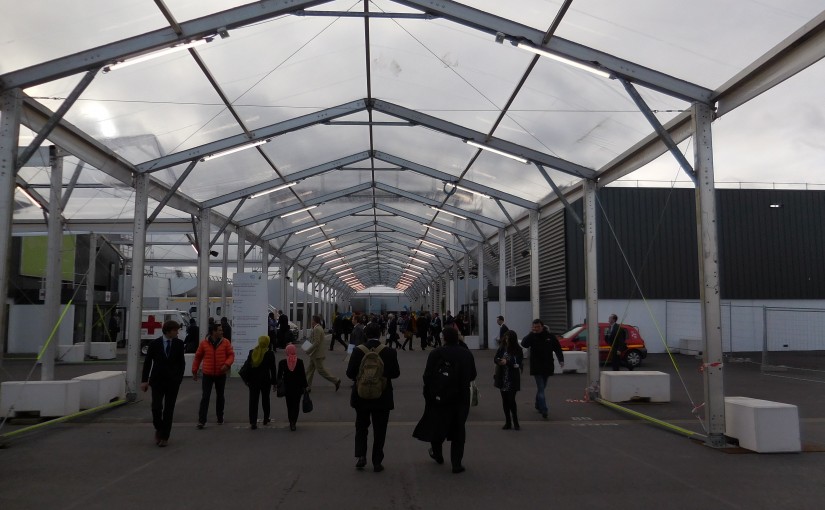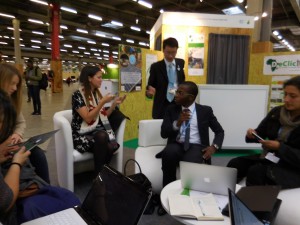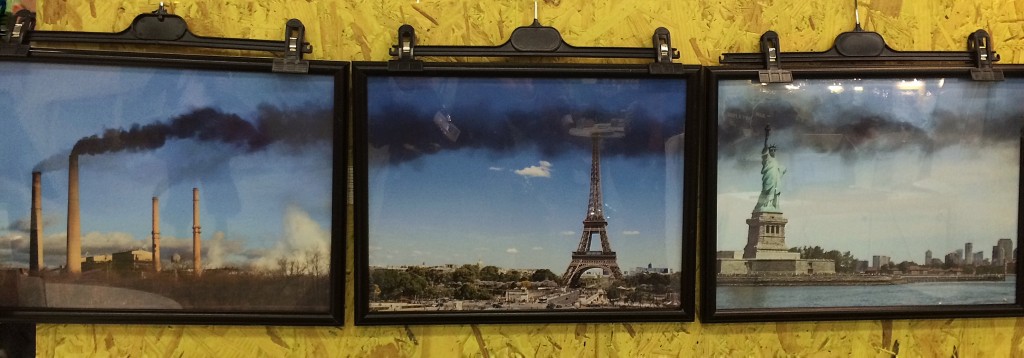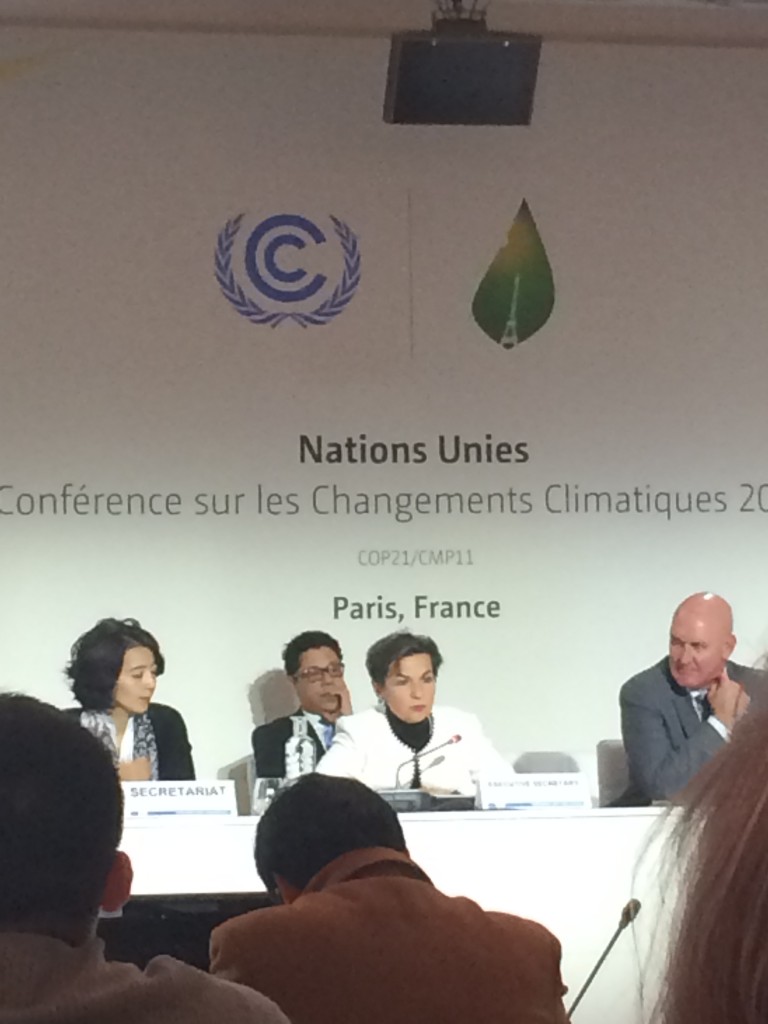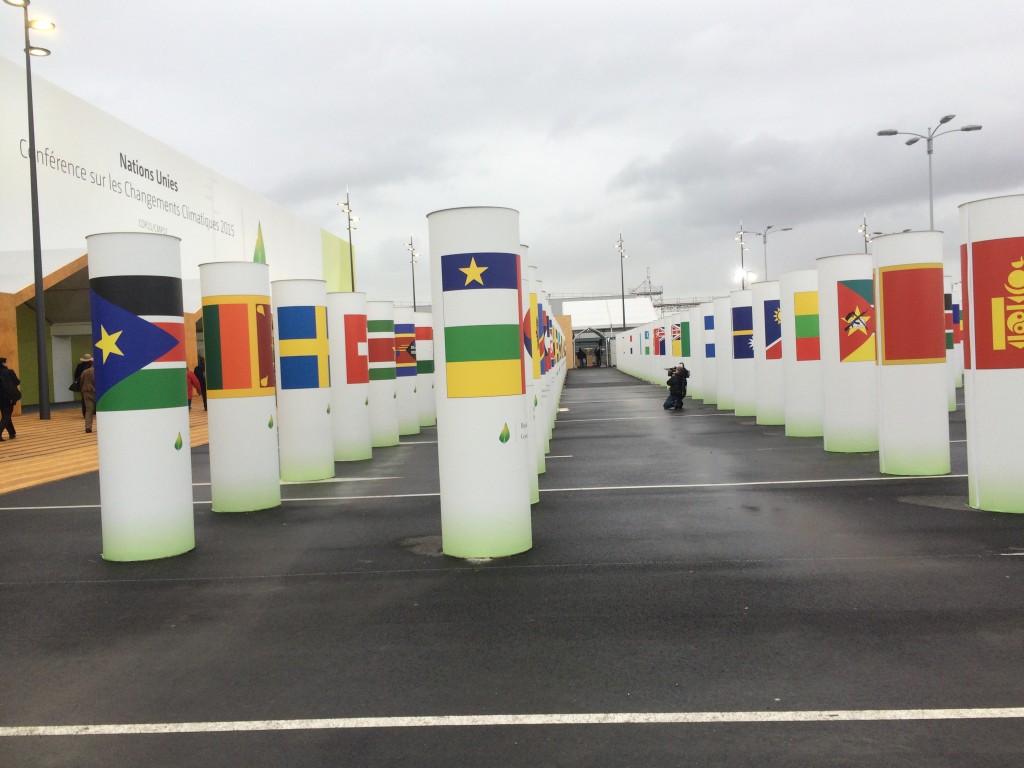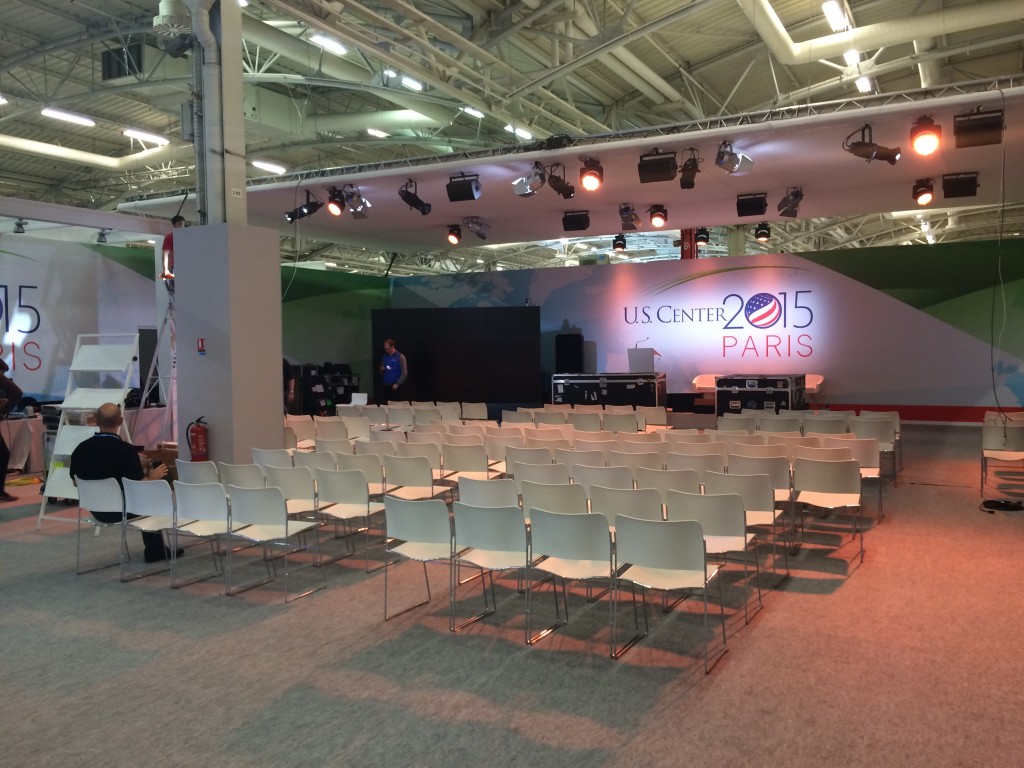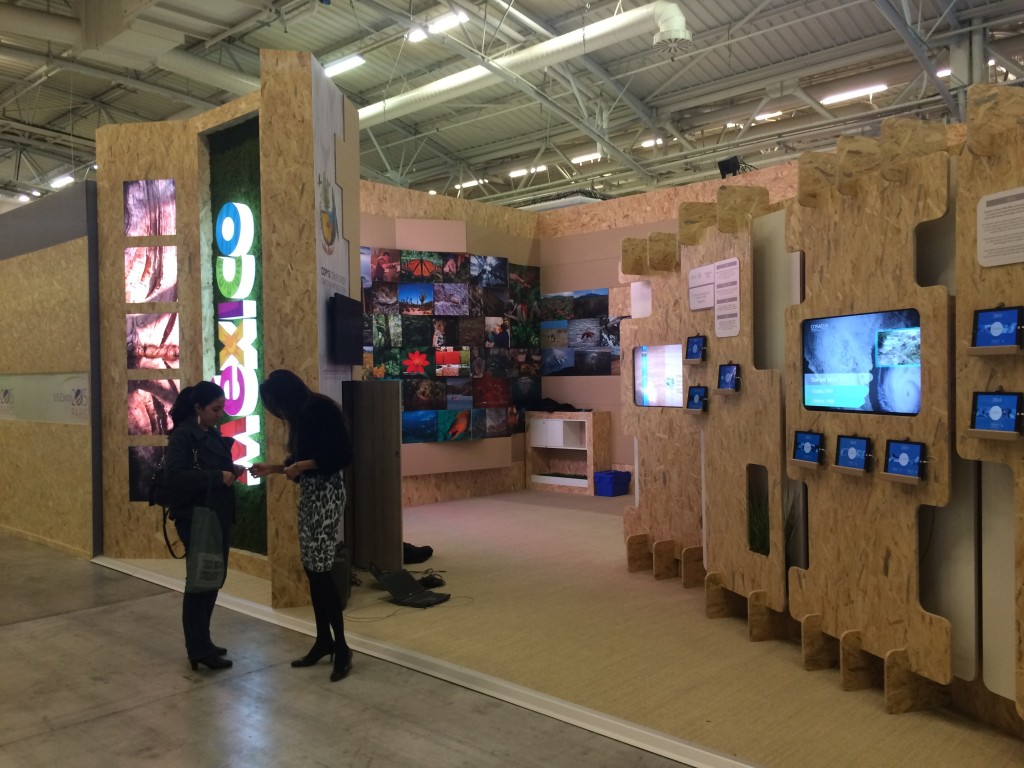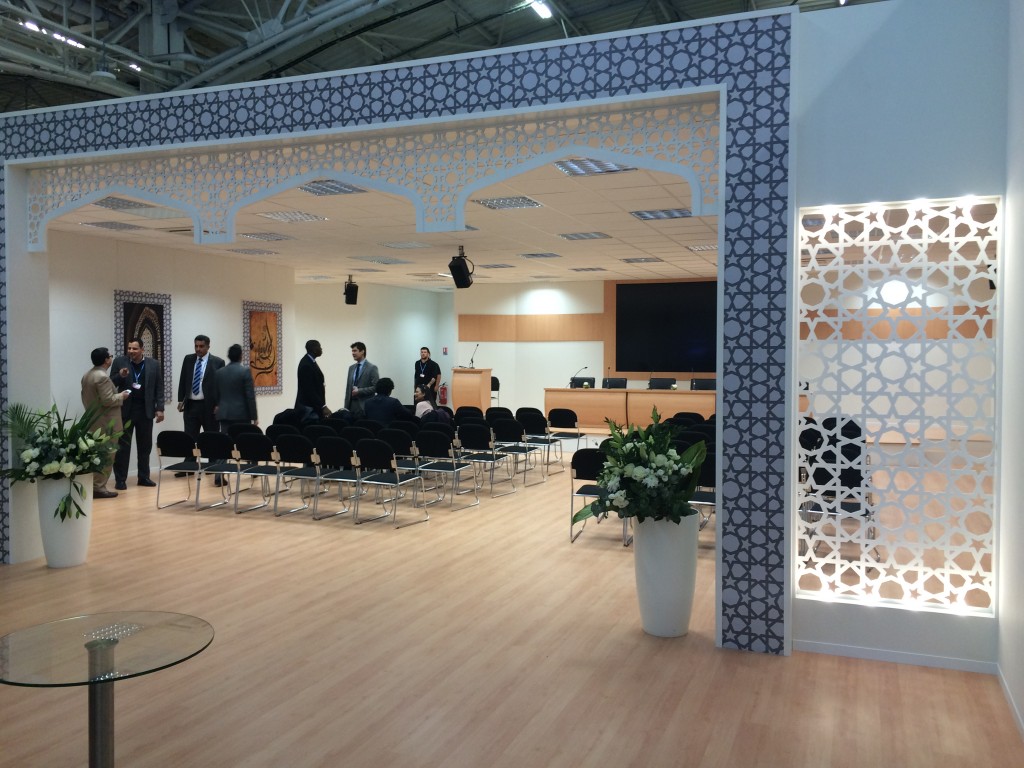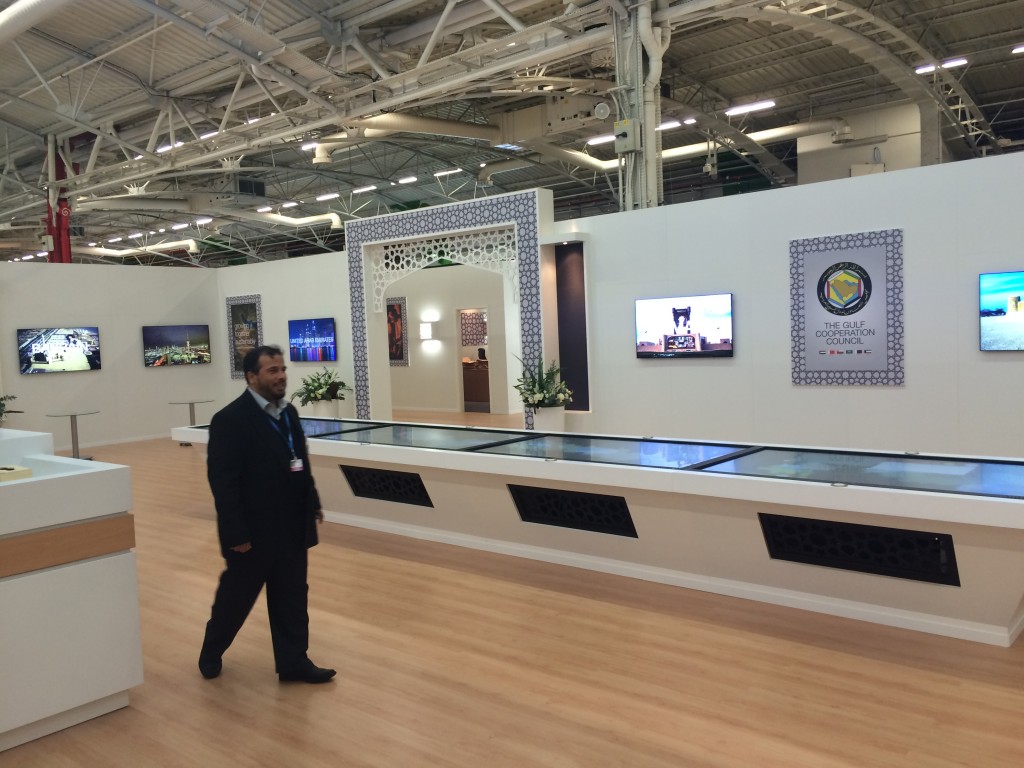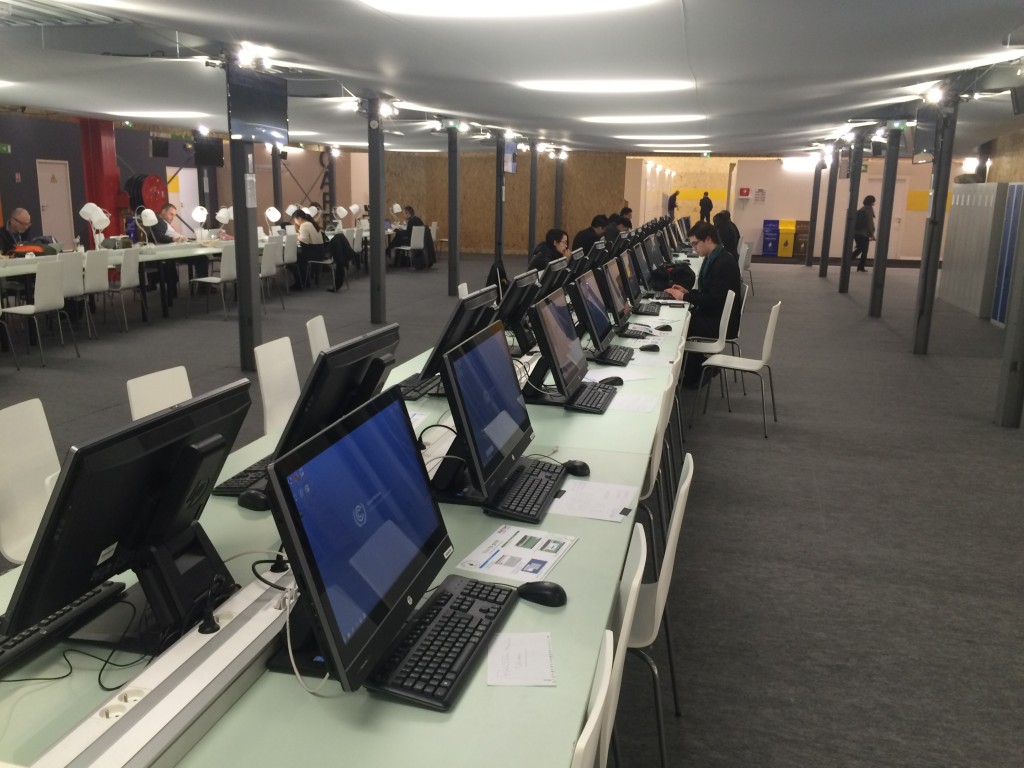I woke up early this morning, ate a quick breakfast at the hostel, and then took the metro and then shuttle to Le Bourget for the first day of COP21. The Paris sky transitioned from dark to pink as more and more people, sporting their UN badges, filled the train. There were at least 5 languages swirling around me before we reached our destination.
After chugging water at security I followed different youth groups to the first YOUNGO meeting at 8am. YOUNGO stands for youth non-governmental organizations. These young adults have been working to build capacity at the negotiation space since COP 5 in Bonn. I was impressed with how organized and relatively efficient the meeting was. Institutional memory is very important for YOUNGO since people age out of the group. Leaders introduced each working group and what times they would be meeting during the day (communication, women’s rights, intergenerational equity, health, education, long term goals,…). This is how I quickly became part of both the adaptation and the “loss and damage” working group.
Already it has been amazing to be in these small groups with students from all over the world (Burkino Faso, Sweden, Canada, Peru, China,..) dedicated to promoting that the Paris text (ADP) includes equitable language and articles for those most impacted by changes in climate. For adaptation we are working on drafting a paragraph and line number specific document that details an adaptation position that is aligned with some vulnerable countries’ pledges. For “loss and damage” we are organizing an action that illustrates the possible affects for countries hit by disaster (ocean acidification, drought, flooding) and the effects for people of those nations when a loss and damage mechanism is not in place.
In addition to the working group here are some photos from the opening ceremony and side events I attended the first day:
YOUNGO working group on Adaptation
